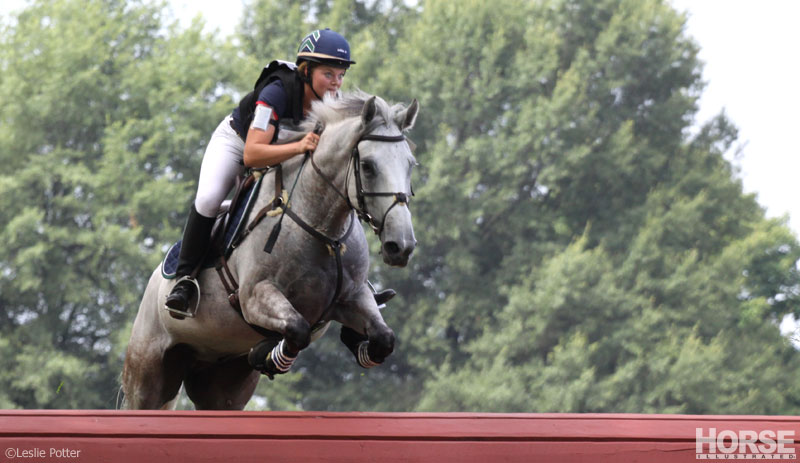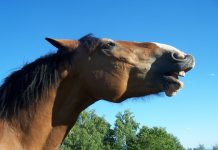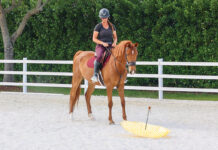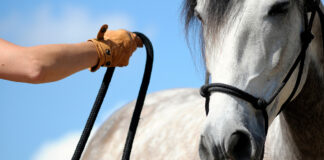Few would argue that little girls and horses seem to have a special connection. Popularized in classic stories and film, the undying devotion of a girl for her horse is the stuff legends are made of. And at a glance, life does appear to imitate art where horses are concerned. You may not know many little boys who’d be willing to trade in their Tonka trucks for real-life ponies, but chances are good you know quite a few “horse-crazy” young ladies who would give up almost anything to spend hours on end with horses.

I contend that passion for horses is not by nature an exclusively female domain. In some countries I’ve visited, men do play a significant role in horse society. In Great Britain, for example, pony trekking and hunting on horseback are part of a social fabric that embraces both men and women. And the owners and trainers of the horses I met in Egypt were predominantly male. During my visit, I made the acquaintance of one Egyptian horseman who had a deep and natural bond with his beautiful Arabian mare, a bond which produced one of the best trained horses I have ever had the pleasure to ride.
Here at home, the male/horse relationship is actually stronger than at first it might appear. Consider the legendary bond between the cowboy and his faithful horse. That legacy lives on today with an abundance of men in the traditional western sports of roping, cutting and team penning. There are certainly plenty of prominent horsemen at the higher levels of the English disciplines, too, and the USET certainly isn’t short on male team members. If you make a list of the finest nationally known trainers, you’re sure to name quite a few men as well.
Depending on the individual horse’s character and prior experiences, certain aspects of the handler’s gender can have a positive or negative effect. In equine society, pecking orders known as dominance hierarchies keep the peace between individual animals living together. There are many factors that can result in one horse being dominant over another, but the quality that most affects dominance status is a horse’s overall size. The largest horses are usually the most dominant ones. With dominant horses, a man’s tendency to have a larger body size and a deeper voice may be advantageous for establishing a dominant position in the cooperative relationship between horse and human. But for more submissive horses or those who have had negative prior experiences with humans, the more imposing physical characteristics men often have can be a serious disadvantage. On the other hand, women may have an edge because their social conditioning emphasizes picking up nonverbal cues, and relating rather than dominating. Bear in mind that horses are both herd animals and prey animals, so trainers must walk a fine line between maintaining the upper hand socially and not being overly threatening, intimidating or “predatory.”

When humans work with horses, we should be aware that either the horse or the human will be dominant, even in the most cooperative relationship, according to the rules horses themselves live by. With size playing a significant role in horse/horse dominance interactions, it would seem that men would have a distinct advantage over most women in establishing the dominant position with horses due to their larger stature. But fortunately for smaller riders, establishing human dominance with horses is not simply a matter of physical intimidation. It is clear from watching a good trainer or rider at work that human dominance is asserted and maintained largely through confidence and assurance, which is relayed through body posture, a language that horses through long evolutionary adaptation are well-equipped to understand. It can be advantageous to be large, but it is certainly not necessary.
I have heard it said that stallions can be especially sensitive to differences between male and female handlers, so therefore men make better stallion handlers. While stallions can indeed present unique behavioral challenges, what really matters in handling stallions are those same qualities that matter for all horses: experience and confidence. Aggressive behavior in stallions serves many adaptive purposes. Stallions “drive” or “herd” their mares and foals using classic aggressive postures: ears lowered and pinned back and neck outstretched. They also rely upon aggression to drive their juvenile offspring out of the herd, which serves as an evolutionary safeguard against inbreeding. They also rely upon violent aggression to defend their bands against thefts by other stallions or attacks by predators. Many stallions by nature are inclined to be dominant for these very reasons, and therefore require experienced and attentive handling, whatever the gender of the handler.
Read more about research into horses’ perception of male and female riders >>
Horses, like humans, are individuals with unique personalities. As such, each horse will be more responsive to particular qualities of some handlers and less responsive to others, and this will vary with the horse.
There are no simple formulas for successful equine interactions because horses and humans are all individuals. By their very nature, horse activities require a meeting of two unique minds, and what has to result is a harmonious relationship based on mutual trust and respect. Success with horses is no more likely for a female than for a male based simply on gender alone, whether the relationship is between a stallion and his handler or a child and her pony. The qualities of self-assurance and an air of easy confidence around horses are very important and develop in time through experience, but they won’t work for every horse, every time. For above all else, the personal compatibility between a person and the individual horse he or she is working with is the factor of greatest importance in the horse/human equation.






Great article Brenda.
I have more woman contact me for my horse graphics than men. I don’t know if that means more horse businesses are owned by woman than men or maybe woman are more likely to feel the need for horse graphics and logo designs for their equine business.
Sure, it’s more common for women to be seen in the horse industry. But we need to open our eyes and see that there are boys and men out there who love horses just as much. Notice how in the Show Jumping and Dressage arenas in competitive sport are entered by an euqal amount of men and women? Sometimes the majority of Show Jumping is men. But that doesn’t mean they love the sport more or are better at it. Men and Women are equally in love with horses through out the world. Not just women. =) It’s not good to be so biased about how women are in tuned more with horses than men are. Some are, but not everyone.
Interesting article. I think way more girls than boys are interested in horses but things equal out as they age. Some girls lose interest and boys realize that they’re missing out on something wonderful.
An attention grabbing headline, but I don’t believe any war exists. In my view young girls are often attracted to horses because of the romance of the idea. They like to hang out with them as much as ride them. Boys will ride a horse for an entirely different reason, fun, speed, proof of manhood etc. There are thousands of horses kept by woman as “pets”, they feed them, brush them, lead them around and as often as not put them back out again. Guys like a bit of action, throw the saddle on and go for a fast ride (I know I am generalising). Guys like the competitive side of horses, like show jumping, horse racing (nearly exclusicvely men), from racing to trots, to fences, polo cross, polo, predominantly men. In hand classes, showing horses, polishing them for dressage…, lots of woman, just different interests.
I agree many more girls are intertested in horses than male in the USA at least. I would like to point out though that the kind of attention a horse recieves form females and males are often different. Girls tend to spoil thier horse and let him do as he pleases and feels she needs to protect him by wraping him in blankets and putting him in a stall at night and feeding them sweets, they are more worried about “hurting thier feelings” and makeing the horse “not love” them, so they tend to be easy on a horse(this does NOT go for every girl, it is commen though and I would like to point out that I am a girl). Men tend to be more Macho and lack patiance for a horse that wants to push them, they loose thier temper and punish the horse by hitting and flying off the handle, where then the horse does not understand and becomes fearfull. They can also overlook things like cuts “Eh he’s a big boy he’ll pull through.”. The treatment horses recieve from Girls is very kind and gental and horses offten learn they can walk all over a girl. The treatment they recieve from men is more strict it can be mean with much punishment, so horses may be more respecting of mens space, but warry as well especialy if the man is not direct. Men and Girls alike should strive to be a happy-medium. Careing of the horse, his safty and wellbeing and openly rewarding them for things they do. But also demanding of repect and untolerant of pushy behavior and responding with direct pressure on the horse. This is showing good leadership, a good leader in a herd always does somethign for a reason and shows zero tolerance if a lower horse tries to push for dominance, lower horses will respect that, and follow thier leader respecting thier leader’s space but intently watching them so they miss nothing the leader does. So lets all be leaders and not just girls or men!